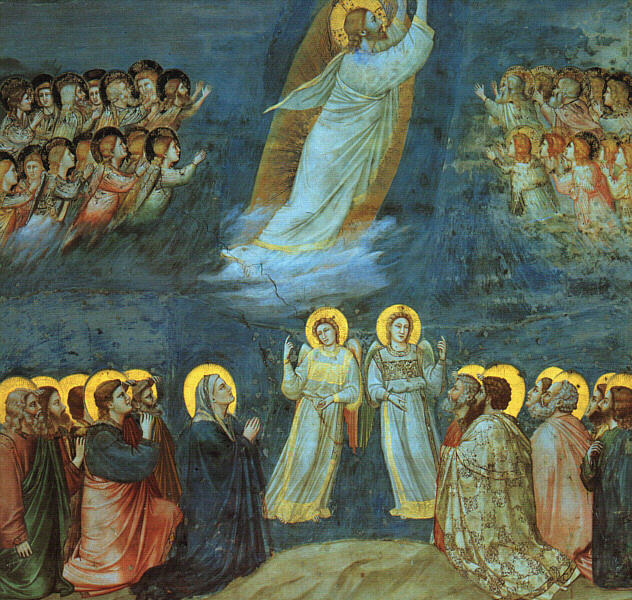Giotto is
considered to have been the most important Italian painter of the 14th century. His
conception of the human figure in broad, rounded terms�rather than in the flat,
two-dimensional terms of Gothic and Byzantine styles indicated a concern for naturalism
that was a milestone in the development of Western art.
He was born Giotto di Bondone in Colle di Vespignano, near Florence. Details of his early
life are scarce, but he probably served an apprenticeship in Florence before embarking on
a career that took him to Rome, Padua, Arezzo, Rimini, Assisi, and Naples.
Giotto's entire output consists of religious works,
primarily altarpieces and church frescoes. Few remain in good condition, and most have
disappeared entirely or have been almost wholly repainted. Others cannot be securely
attributed to him and are more likely to be the work of followers or apprentices. One of
his earliest and best-known attributable works is the large fresco cycle illustrating the
lives of the Virgin and Christ in the Scrovegni (Arena) Chapel in Padua, which may have
been completed as early as 1305 or 1306. Giotto's scenes break with rigid medieval
stylisation to present human figures in rounded sculptural forms that appear to have been
based on living models rather than on idealized archetypes. He rejected the bright,
jewel-like colors and long, elegant lines of the Byzantine style in favor of a quieter,
more realistic presentation. His emphasis is on the human and the real rather than on the
divine and the ideal�a revolutionary development in an age dominated by religion. His
settings (here as in all of his works) consist of shallow, boxlike architectural
backdrops. These are somewhat more open than the flat planes of Byzantine and Gothic
paintings but fall short of the full perspective of the Renaissance.
�
The Ognissanti Madonna (1310?, Galleria degli Uffizi,
Florence) is roughly contemporary with the Arena frescoes and is Giotto's only
attributable panel painting. It shows the influence of the earlier Florentine painter
Giovanni Cimabue in composition and style, but is unique in its humanization of the
Madonna's face. Two fresco cycles in the Church of Santa Croce, Florence�depicting
the life of Saint Francis and the lives of Saint John the Baptist and Saint John the
Evangelist�are thought to be later works. While they are extensively restored, they
represent the most advanced stage of Giotto's style, showing human figures grouped in
free, active poses. The question of Giotto's authorship of the frescoes in the Upper
Church at Assisi is an ongoing discussion among art historians.
Giotto was ahead of his time. Most of his followers painted in a less significant, more
overtly decorative style. It remained for Masaccio, a century later, to expand upon
Giotto's monumental style. Giotto's example was crucial to the development of later
Florentine painting, and his preoccupation with the realities of the human figure and the
visible world became the dominant concerns of the Florentine Renaissance. He died in
Florence, in 1337.

This is an example of Giotto's frescoes at the Arena Chapel, Padua, Italy, showing Jesus
ascending to heaven. The beautiful blue background is signature to Byzantine art work and
was created using the gemstone 'Lapis Lazuru'. The composition, emphasised by the
onlookers reaching arms, cleverly draws the eye straight to the center of the page and the
main character. This is an example of artwork glorifying the path to heaven.
�
